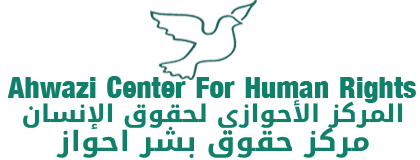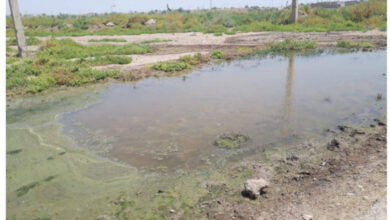Bituman emulsion spraying on vegetated sand hills in Ahwaz causing animals and plants to die

Bituman emulsion spraying on vegetated sand hills in Ahwaz causing animals and plants to die
A few years ago the Iranian authorities have commenced a large project of spraying bitumen emulsion outside Ahwaz cities and around villages causing a complicated environmental issue where animals and natural plants are dying .
This is contributing to the extinction of many plants and animals local to the Ahwaz area. The Iranian authorities claim this is only to weight down the sand particles that live on these hills, preventing them from being lifted by the windy storms and creating sand storms. To this day, there is no scientific proof to support this theory. The sand deserts in Ahwaz region could not be the source of the horrible sand storms as their soil is made up of large sand grains that even in the case of being carried by strong wind, they will settle down nearby. The sand storm in Ahwaz started around 11 years ago, in 2008, straight after the Iranian government started drying the seasonal lagoons and swamps to water the sugarcane farms. The soil of the dried lagoons is made of clay which is the smallest soil particle found in nature. When these vast lagoons dry, the soil’s particles can easily be carried by wind creating the sand storms in Ahwaz. Many environmental activists warned about the catastrophic environmental impact this will cause however the Iranian government proceeded into farming sugarcane and transferring the water from Ahwaz into other central cities in the Iranian so called geographical map. The dried up lagoons and swamps cause persistent drought causing an environmental crime of killing countless animals and plants to extinction. People are also victims of this project especially in the dry seasons with unknown respiratory diseases taking many lives, young and old alike. Many have connected these diseases to being originated from the sand storms. As it is understood by the people, it is because the enriched lagoon clay carries many kinds of bacteria and tiny living particles that when inhaled could cause the respiratory unknown diseases. The government is refusing to invest in this study fearing the results which can confirm the dried up lagoons are behind all of this.
In an attempt to draw people’s attention away from the root cause of this now multi-layered environmental issue, the bitumen spraying of sandy hills started a few years ago as a cover up. While spraying bitumen emulsion in farms at the start of the farming season can create a suitable environment for seed germination and there has been many studies done to prove the environmental benefits of bitumen emulsion and its non-hazardous nature; it is strongly recommended not to be used in environments where there is natural vegetation happening. As beneficial as it is to the farms in germination, it needs to be applied to the correct environment and it must not be near people, animals or land with established greens and vegetation. Bitumen can kill animals by immobilizing, suffocating and poisoning them.
When inhaled by humans it is fatal as its strong adhesive nature could potentially kill a person by blocking the air flow to the lungs. In the third video we see a shepherd is complaining of having lost many sheep due to the bitumen being sprayed on present vegetation that constitutes his sheep’s daily diet. He is imploring the government to not spray so near the villages and that life is already utterly difficult with the current COVID-19 situation.
In the last video we can also see a female villager complaining that they have nothing left except for the sheep and to please stop the spraying of the bitumen as it is taking away their livelihood from them which is not much already. We can also see their poor living conditions in the background which tells a lot about a villager’s standard life in Ahwaz.
The Ahwazi Centre for Human Rights expresses its deepest concerns about the environmental issues in the occupied Ahwaz caused by the Iranian government and is urging the international environmental activists community to collectively act and put pressure on Iran to immediately stop this hideous and inhumane abuse of the natural environments in Ahwaz and all of its components and to allow the natural water to return to the lagoons. We hope that by doing so, one day Ahwaz can have its nature back, all the local animals and plants have their habitat restored and all people will have clean air as before and enough water for farming.
Report By: Athar Jacob
Ahwazi Centre for Human Rights
07-April-2019




